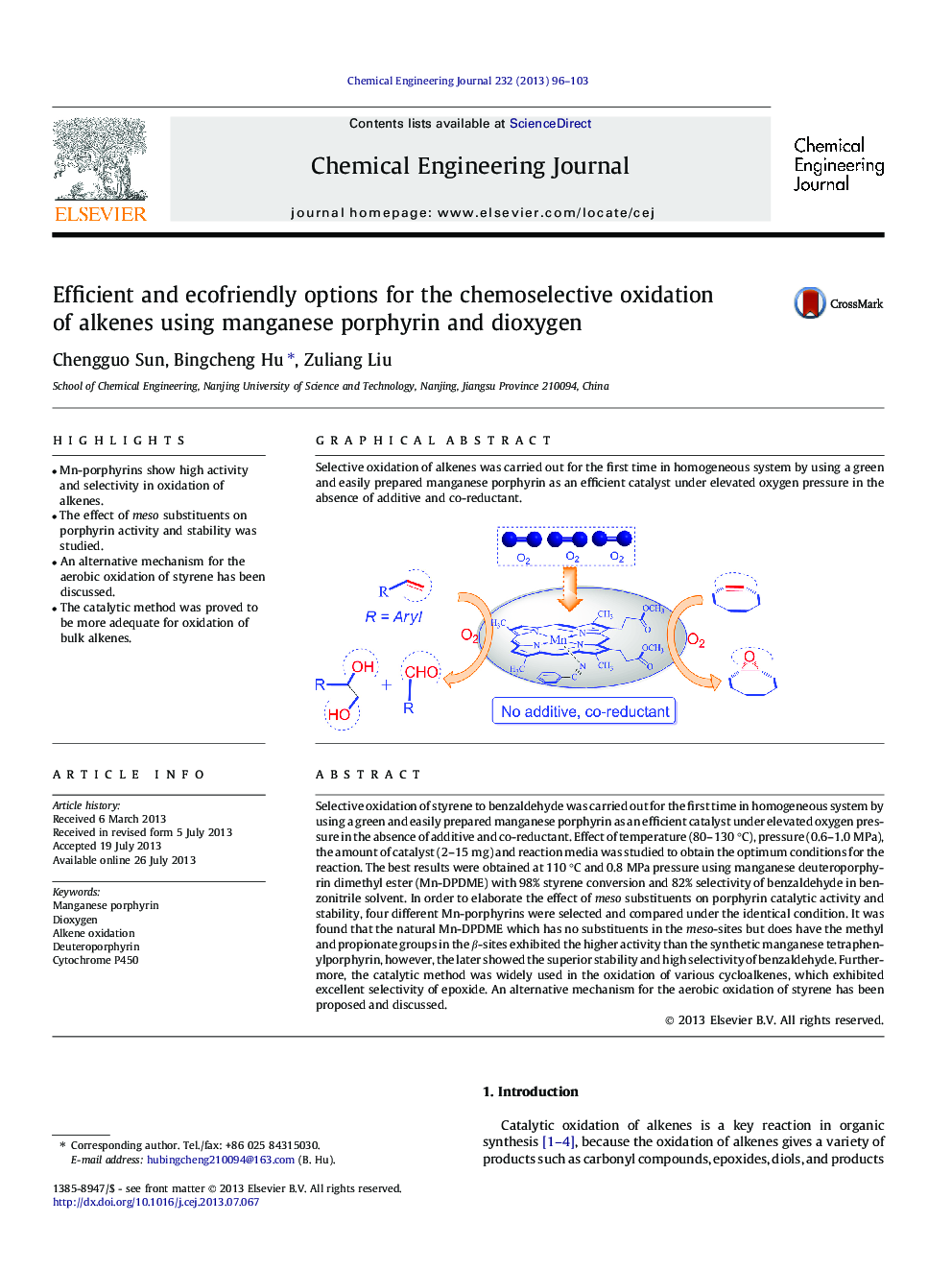| Article ID | Journal | Published Year | Pages | File Type |
|---|---|---|---|---|
| 148168 | Chemical Engineering Journal | 2013 | 8 Pages |
•Mn-porphyrins show high activity and selectivity in oxidation of alkenes.•The effect of meso substituents on porphyrin activity and stability was studied.•An alternative mechanism for the aerobic oxidation of styrene has been discussed.•The catalytic method was proved to be more adequate for oxidation of bulk alkenes.
Selective oxidation of styrene to benzaldehyde was carried out for the first time in homogeneous system by using a green and easily prepared manganese porphyrin as an efficient catalyst under elevated oxygen pressure in the absence of additive and co-reductant. Effect of temperature (80–130 °C), pressure (0.6–1.0 MPa), the amount of catalyst (2–15 mg) and reaction media was studied to obtain the optimum conditions for the reaction. The best results were obtained at 110 °C and 0.8 MPa pressure using manganese deuteroporphyrin dimethyl ester (Mn-DPDME) with 98% styrene conversion and 82% selectivity of benzaldehyde in benzonitrile solvent. In order to elaborate the effect of meso substituents on porphyrin catalytic activity and stability, four different Mn-porphyrins were selected and compared under the identical condition. It was found that the natural Mn-DPDME which has no substituents in the meso-sites but does have the methyl and propionate groups in the β-sites exhibited the higher activity than the synthetic manganese tetraphenylporphyrin, however, the later showed the superior stability and high selectivity of benzaldehyde. Furthermore, the catalytic method was widely used in the oxidation of various cycloalkenes, which exhibited excellent selectivity of epoxide. An alternative mechanism for the aerobic oxidation of styrene has been proposed and discussed.
Graphical abstractSelective oxidation of alkenes was carried out for the first time in homogeneous system by using a green and easily prepared manganese porphyrin as an efficient catalyst under elevated oxygen pressure in the absence of additive and co-reductant.Figure optionsDownload full-size imageDownload as PowerPoint slide
